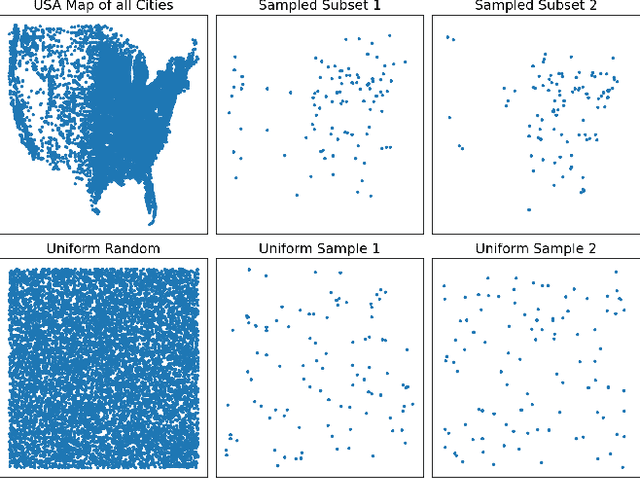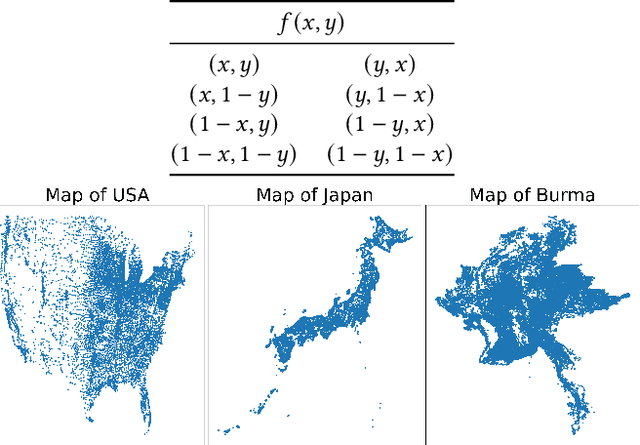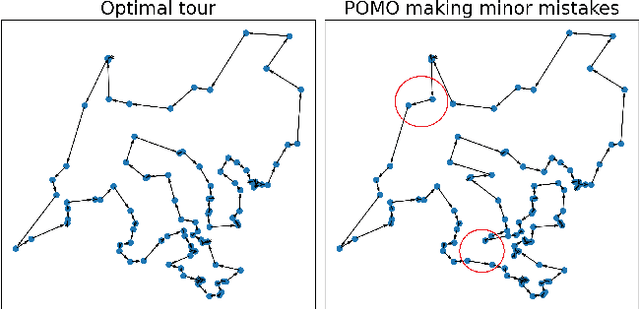Wee Sun Lee
NUS
Is Model Editing Built on Sand? Revealing Its Illusory Success and Fragile Foundation
Oct 01, 2025Abstract:Large language models (LLMs) inevitably encode outdated or incorrect knowledge. Updating, deleting, and forgetting such knowledge is important for alignment, safety, and other issues. To address this issue, model editing has emerged as a promising paradigm: by precisely editing a small subset of parameters such that a specific fact is updated while preserving other knowledge. Despite its great success reported in previous papers, we find the apparent reliability of editing rests on a fragile foundation and the current literature is largely driven by illusory success. The fundamental goal of steering the model's output toward a target with minimal modification would encourage exploiting hidden shortcuts, rather than utilizing real semantics. This problem directly challenges the feasibility of the current model editing literature at its very foundation, as shortcuts are inherently at odds with robust knowledge integration. Coincidentally, this issue has long been obscured by evaluation frameworks that lack the design of negative examples. To uncover it, we systematically develop a suite of new evaluation methods. Strikingly, we find that state-of-the-art approaches collapse even under the simplest negation queries. Our empirical evidence shows that editing is likely to be based on shortcuts rather than full semantics, calling for an urgent reconsideration of the very basis of model editing before further advancements can be meaningfully pursued.
SHIELD: Multi-task Multi-distribution Vehicle Routing Solver with Sparsity and Hierarchy
Jun 11, 2025Abstract:Recent advances toward foundation models for routing problems have shown great potential of a unified deep model for various VRP variants. However, they overlook the complex real-world customer distributions. In this work, we advance the Multi-Task VRP (MTVRP) setting to the more realistic yet challenging Multi-Task Multi-Distribution VRP (MTMDVRP) setting, and introduce SHIELD, a novel model that leverages both sparsity and hierarchy principles. Building on a deeper decoder architecture, we first incorporate the Mixture-of-Depths (MoD) technique to enforce sparsity. This improves both efficiency and generalization by allowing the model to dynamically select nodes to use or skip each decoder layer, providing the needed capacity to adaptively allocate computation for learning the task/distribution specific and shared representations. We also develop a context-based clustering layer that exploits the presence of hierarchical structures in the problems to produce better local representations. These two designs inductively bias the network to identify key features that are common across tasks and distributions, leading to significantly improved generalization on unseen ones. Our empirical results demonstrate the superiority of our approach over existing methods on 9 real-world maps with 16 VRP variants each.
Extending Epistemic Uncertainty Beyond Parameters Would Assist in Designing Reliable LLMs
Jun 09, 2025Abstract:Although large language models (LLMs) are highly interactive and extendable, current approaches to ensure reliability in deployments remain mostly limited to rejecting outputs with high uncertainty in order to avoid misinformation. This conservative strategy reflects the current lack of tools to systematically distinguish and respond to different sources of uncertainty. In this paper, we advocate for the adoption of Bayesian Modeling of Experiments -- a framework that provides a coherent foundation to reason about uncertainty and clarify the reducibility of uncertainty -- for managing and proactively addressing uncertainty that arises in LLM deployments. This framework enables LLMs and their users to take contextually appropriate steps, such as requesting clarification, retrieving external information, or refining inputs. By supporting active resolution rather than passive avoidance, it opens the door to more reliable, transparent, and broadly applicable LLM systems, particularly in high-stakes, real-world settings.
Optimizing Anytime Reasoning via Budget Relative Policy Optimization
May 19, 2025



Abstract:Scaling test-time compute is crucial for enhancing the reasoning capabilities of large language models (LLMs). Existing approaches typically employ reinforcement learning (RL) to maximize a verifiable reward obtained at the end of reasoning traces. However, such methods optimize only the final performance under a large and fixed token budget, which hinders efficiency in both training and deployment. In this work, we present a novel framework, AnytimeReasoner, to optimize anytime reasoning performance, which aims to improve token efficiency and the flexibility of reasoning under varying token budget constraints. To achieve this, we truncate the complete thinking process to fit within sampled token budgets from a prior distribution, compelling the model to summarize the optimal answer for each truncated thinking for verification. This introduces verifiable dense rewards into the reasoning process, facilitating more effective credit assignment in RL optimization. We then optimize the thinking and summary policies in a decoupled manner to maximize the cumulative reward. Additionally, we introduce a novel variance reduction technique, Budget Relative Policy Optimization (BRPO), to enhance the robustness and efficiency of the learning process when reinforcing the thinking policy. Empirical results in mathematical reasoning tasks demonstrate that our method consistently outperforms GRPO across all thinking budgets under various prior distributions, enhancing both training and token efficiency.
Reasoning-CV: Fine-tuning Powerful Reasoning LLMs for Knowledge-Assisted Claim Verification
May 18, 2025Abstract:Claim verification is essential in combating misinformation, and large language models (LLMs) have recently emerged in this area as powerful tools for assessing the veracity of claims using external knowledge. Existing LLM-based methods for claim verification typically adopt a Decompose-Then-Verify paradigm, which involves decomposing complex claims into several independent sub-claims and verifying each sub-claim separately. However, this paradigm often introduces errors during the claim decomposition process. To mitigate these errors, we propose to develop the Chain-of-Thought (CoT)-Verify paradigm, which leverages LLM reasoning methods to generate CoT-verification paths for the original complex claim without requiring decompositions into sub-claims and separate verification stages. The CoT-Verify paradigm allows us to propose a natural fine-tuning method called Reasoning-CV to enhance the verification capabilities in LLMs. Reasoning-CV includes a supervised fine-tuning (SFT) stage and a self-improvement direct preference optimization (DPO) stage. Utilizing only an 8B pre-trained LLM, Reasoning-CV demonstrates superior knowledge-assisted claim verification performances compared to existing Decompose-Then-Verify methods, as well as powerful black-box LLMs such as GPT-4o+CoT and o1-preview. Our code is available.
Approximation and Generalization Abilities of Score-based Neural Network Generative Models for Sub-Gaussian Distributions
May 16, 2025Abstract:This paper studies the approximation and generalization abilities of score-based neural network generative models (SGMs) in estimating an unknown distribution $P_0$ from $n$ i.i.d. observations in $d$ dimensions. Assuming merely that $P_0$ is $\alpha$-sub-Gaussian, we prove that for any time step $t \in [t_0, n^{O(1)}]$, where $t_0 \geq O(\alpha^2n^{-2/d}\log n)$, there exists a deep ReLU neural network with width $\leq O(\log^3n)$ and depth $\leq O(n^{3/d}\log_2n)$ that can approximate the scores with $\tilde{O}(n^{-1})$ mean square error and achieve a nearly optimal rate of $\tilde{O}(n^{-1}t_0^{-d/2})$ for score estimation, as measured by the score matching loss. Our framework is universal and can be used to establish convergence rates for SGMs under milder assumptions than previous work. For example, assuming further that the target density function $p_0$ lies in Sobolev or Besov classes, with an appropriately early stopping strategy, we demonstrate that neural network-based SGMs can attain nearly minimax convergence rates up to logarithmic factors. Our analysis removes several crucial assumptions, such as Lipschitz continuity of the score function or a strictly positive lower bound on the target density.
Understanding R1-Zero-Like Training: A Critical Perspective
Mar 26, 2025Abstract:DeepSeek-R1-Zero has shown that reinforcement learning (RL) at scale can directly enhance the reasoning capabilities of LLMs without supervised fine-tuning. In this work, we critically examine R1-Zero-like training by analyzing its two core components: base models and RL. We investigate a wide range of base models, including DeepSeek-V3-Base, to understand how pretraining characteristics influence RL performance. Our analysis reveals that DeepSeek-V3-Base already exhibit ''Aha moment'', while Qwen2.5 base models demonstrate strong reasoning capabilities even without prompt templates, suggesting potential pretraining biases. Additionally, we identify an optimization bias in Group Relative Policy Optimization (GRPO), which artificially increases response length (especially for incorrect outputs) during training. To address this, we introduce Dr. GRPO, an unbiased optimization method that improves token efficiency while maintaining reasoning performance. Leveraging these insights, we present a minimalist R1-Zero recipe that achieves 43.3% accuracy on AIME 2024 with a 7B base model, establishing a new state-of-the-art. Our code is available at https://github.com/sail-sg/understand-r1-zero.
EVaDE : Event-Based Variational Thompson Sampling for Model-Based Reinforcement Learning
Jan 16, 2025



Abstract:Posterior Sampling for Reinforcement Learning (PSRL) is a well-known algorithm that augments model-based reinforcement learning (MBRL) algorithms with Thompson sampling. PSRL maintains posterior distributions of the environment transition dynamics and the reward function, which are intractable for tasks with high-dimensional state and action spaces. Recent works show that dropout, used in conjunction with neural networks, induces variational distributions that can approximate these posteriors. In this paper, we propose Event-based Variational Distributions for Exploration (EVaDE), which are variational distributions that are useful for MBRL, especially when the underlying domain is object-based. We leverage the general domain knowledge of object-based domains to design three types of event-based convolutional layers to direct exploration. These layers rely on Gaussian dropouts and are inserted between the layers of the deep neural network model to help facilitate variational Thompson sampling. We empirically show the effectiveness of EVaDE-equipped Simulated Policy Learning (EVaDE-SimPLe) on the 100K Atari game suite.
Sample-Efficient Alignment for LLMs
Nov 03, 2024



Abstract:We study methods for efficiently aligning large language models (LLMs) with human preferences given budgeted online feedback. We first formulate the LLM alignment problem in the frame of contextual dueling bandits. This formulation, subsuming recent paradigms such as online RLHF and online DPO, inherently quests for sample-efficient algorithms that incorporate online active exploration. Leveraging insights from bandit theory, we introduce a unified algorithm based on Thompson sampling and highlight its applications in two distinct LLM alignment scenarios. The practical agent that efficiently implements this algorithm, named SEA (Sample-Efficient Alignment), is empirically validated through extensive experiments across three model scales (1B, 2.8B, 6.9B) and three preference learning algorithms (DPO, IPO, SLiC). The results demonstrate that SEA achieves highly sample-efficient alignment with oracle's preferences, outperforming recent active exploration methods for LLMs. Additionally, we release the implementation of SEA together with an efficient codebase designed for online alignment of LLMs, aiming to accelerate future research in this field.
Hierarchical Neural Constructive Solver for Real-world TSP Scenarios
Aug 07, 2024



Abstract:Existing neural constructive solvers for routing problems have predominantly employed transformer architectures, conceptualizing the route construction as a set-to-sequence learning task. However, their efficacy has primarily been demonstrated on entirely random problem instances that inadequately capture real-world scenarios. In this paper, we introduce realistic Traveling Salesman Problem (TSP) scenarios relevant to industrial settings and derive the following insights: (1) The optimal next node (or city) to visit often lies within proximity to the current node, suggesting the potential benefits of biasing choices based on current locations. (2) Effectively solving the TSP requires robust tracking of unvisited nodes and warrants succinct grouping strategies. Building upon these insights, we propose integrating a learnable choice layer inspired by Hypernetworks to prioritize choices based on the current location, and a learnable approximate clustering algorithm inspired by the Expectation-Maximization algorithm to facilitate grouping the unvisited cities. Together, these two contributions form a hierarchical approach towards solving the realistic TSP by considering both immediate local neighbourhoods and learning an intermediate set of node representations. Our hierarchical approach yields superior performance compared to both classical and recent transformer models, showcasing the efficacy of the key designs.
 Add to Chrome
Add to Chrome Add to Firefox
Add to Firefox Add to Edge
Add to Edge